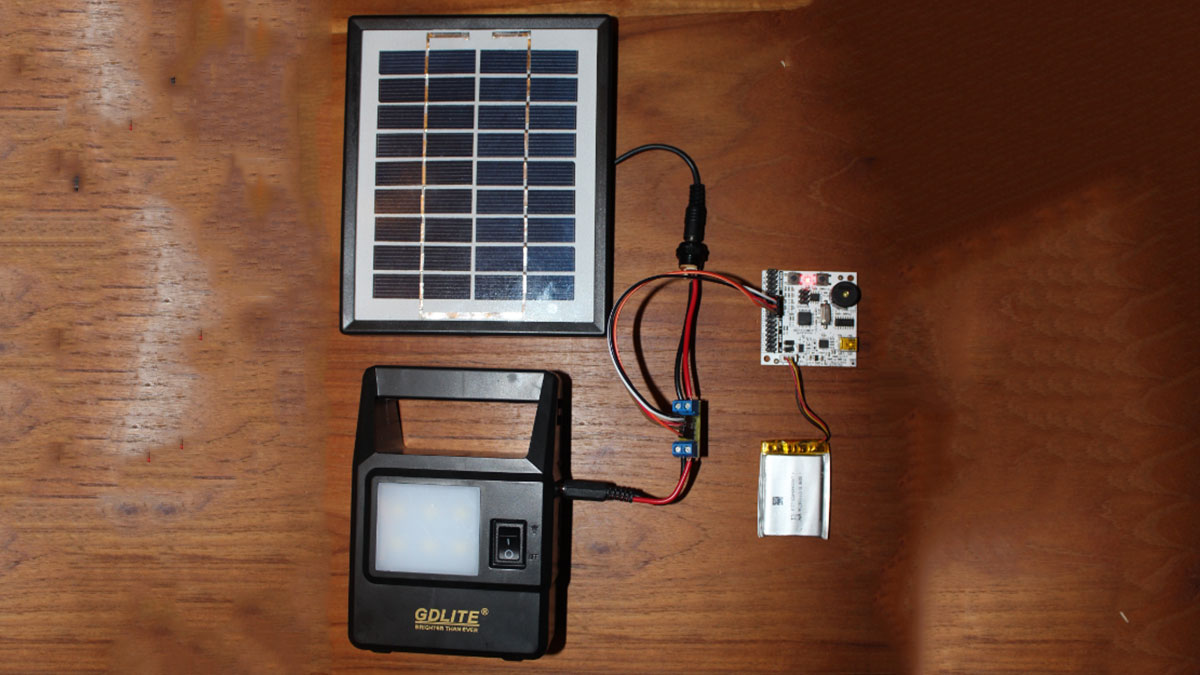It’s undeniable that South Africa is experiencing a critical electricity crisis. On the positive side, it’s forcing us to conserve and consider alternative sources of energy. My mom sponsored our household with a cheap Chinese solar panel with battery pack and LED lights to use during load shedding (we live in Cape Town zone 6 and you can find the schedule here).

This made me wonder: how much solar power does this system harvest in one day? Enter my handy $15 Scorpion Board. I built a cheap current sensor board (using a Diodes ZXCT1051 low side current sensor IC). Schematic:
Then I populated the Scorpion Board with the optional Lithium battery connector and charger, connected the current sensor board and calibrated it using a bench supply and electronic load. This part is easy. Using the command line ADC Data Logger App I set the ADC scale to 1.0 and the offset to 0.0 of each channel and set the board to sample each channel continuously:
>log fit 0 1.0 0.0
>log fit 1 1.0 0.0
>log fit 2 1.0 0.0
>log fit 3 1.0 0.0
>log s
The output values correspond to the raw ADC values and I noted the ADC value for different voltages and load currents. This data was captured in a spreadsheet and a linear fit performed:
The voltage measurement is super accurate (<0.3%) and the current measurement accurate enough (<2.5%). Now I have the calibration values and can set them as follows (ADC#0 is used for current and ADC#2 is used for voltage; I’m not interested in ADC#1 and ADC#3 so the scale and offset is set to zero):
>log fit 0 1.100399391 -5.277095671
> log fit 1 0 0
> log fit 2 35.4527418 50.83118688
> log fit 3 0 0
Nothing left but to set the date & time, the logging interval to 60 seconds, and start logging:
>rtc w 15-05-27 06:30:00
>log samples 60000
>log s
Here is a picture of the solar charger system with the power logger, before I placed it on my roof:
For More Details: Logging harvested solar power using $15 Scorpion Board
